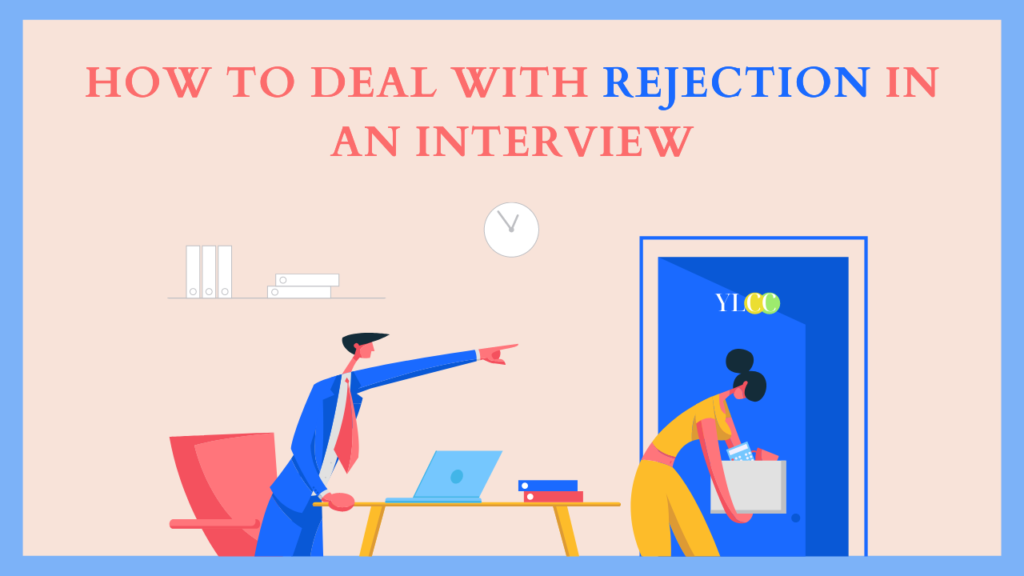1: Introduction: Rejection Is Not the End, It’s Feedback in Disguise
Every engineer knows the sting of seeing that dreaded email subject line: “We regret to inform you…” Whether it’s your dream FAANG company, a hot AI startup, or a role you thought you nailed, rejection can feel like a career setback. For many candidates, it’s more than disappointing, it’s demoralizing. But here’s the truth recruiters won’t always say out loud: rejection isn’t failure. It’s data.
Even the strongest ML engineers get rejected. In fact, at companies like Google, Meta, and Amazon, rejection rates are famously high. Many employees who eventually land offers had been turned away at least once before. Recruiters and hiring managers know this too, they don’t view rejection as a permanent label, but as a reflection of where you are right now.
1.1 Why Rejection Happens (Even to Strong Engineers)
It’s easy to assume rejection means you weren’t “good enough.” But in reality, it often reflects one of several factors:
- Interview performance vs. actual ability: Stress or unfamiliarity with the process may trip you up.
- Company-specific expectations: You may have been strong technically but not aligned with the cultural values or the precise skills they needed.
- Competition: Sometimes the difference between rejection and offer is razor-thin, another candidate may have simply told their story better.
- Timing: Hiring priorities shift; roles open and close quickly in fast-moving orgs.
Understanding this context is critical. Rejection isn’t a judgment on your career; it’s an opportunity to improve your interview readiness.
1.2 Reframing Rejection: A Growth Mindset
The candidates who bounce back aren’t the ones who avoid rejection. They’re the ones who treat rejection as structured feedback.
Instead of:
- “I’ll never be good enough.”
Try: - “This round highlighted gaps I can now address.”
This mindset shift does two things:
- It reduces the emotional sting of rejection.
- It transforms failure into a roadmap for growth.
Recruiters themselves are trained to value resilience and adaptability. When they see a candidate reapply with stronger preparation, it signals the very growth mindset they look for in hires.
1.3 Rejection as a Hidden Advantage
Ironically, rejection can give you insights that first-time candidates don’t have:
- You know the company’s interview style.
- You’ve seen the types of questions they ask.
- You’ve learned where your nerves or prep strategy fell short.
That information becomes your edge when you approach the next opportunity.
1.4 What This Blog Will Cover
In the sections that follow, we’ll break down exactly how to turn rejection into a strategy for success. You’ll learn how to:
- Decode what rejection really means.
- Seek and use feedback effectively.
- Diagnose your weak points.
- Build a targeted improvement plan.
- Reframe and reapply strategically.
- Learn from success stories of engineers who turned “no” into “yes.”
- Leverage resilience as a skill recruiters value.
By the end, you’ll see rejection not as the end of the journey, but as an essential step toward landing your next offer.
Key Takeaway
Rejection doesn’t define your career, your response to it does. By reframing rejection as feedback and using it to sharpen your preparation, you put yourself in the small but powerful group of candidates who don’t just get rejected, but come back stronger.
2: Step 1 – Decode What the Rejection Really Means
When you get that rejection email, the immediate reaction is usually emotional: frustration, disappointment, maybe even self-doubt. But if you want to turn rejection into a future offer, the first step is to decode what that rejection is actually telling you.
Recruiters rarely spell everything out, but there are patterns in rejections that you can learn to interpret. Understanding these signals helps you build a smarter plan for your next attempt.
a. The Different “Types” of Rejections
Not all rejections mean the same thing. They usually fall into one of these categories:
- Resume/early screening rejection
- Likely due to keyword mismatch or not showing the right skills upfront.
- This doesn’t necessarily mean you lack the skills; it may just mean your resume isn’t aligned with the job description.
- Technical round rejection
- Could mean gaps in problem-solving speed, coding fluency, or system design knowledge.
- Sometimes it’s not about correctness but about communication of your thought process.
- Behavioral/culture-fit rejection
- Companies like Amazon or Meta weigh leadership principles and values heavily.
- If you don’t connect your answers to their principles, you may come across as “not aligned,” even if you’re technically strong.
- Final-round rejection
- Often the most frustrating. This can mean someone else simply had a slightly better fit or more directly relevant experience.
- It doesn’t always mean you weren’t strong, sometimes it’s just relative competition.
b. Reading Between the Lines of Recruiter Communication
Recruiters are usually polite but vague in rejection messages: “We’ve decided not to move forward” or “The team felt we’re moving in a different direction.”
Here’s how to interpret these carefully:
- “Not the right fit at this time” → often culture or experience mismatch.
- “Other candidates were a closer fit” → you were competitive, but someone else edged you out.
- “We’ll keep your resume on file” → they may genuinely want you to reapply later.
Don’t assume every rejection is a verdict on your ability, many are circumstantial.
c. When It’s About Process, Not Skill
At FAANG companies, hiring isn’t just about you, it’s about the process. Teams often require unanimous “hire” votes. That means:
- One interviewer’s “no” can tip the balance.
- Hiring priorities may change mid-process.
- Headcount freezes or role shifts can cancel offers entirely.
Strong candidates sometimes get rejected simply because of process dynamics. Understanding this prevents you from internalizing every rejection as personal failure.
d. Spotting Patterns Across Multiple Rejections
One rejection can be circumstantial. But if you notice a pattern across multiple interviews, that’s valuable data:
- Always stuck at technical rounds? → Work on problem-solving fluency.
- Behavioral rounds consistently fail? → Refine your storytelling and alignment with values.
- Early resume rejections? → Reframe how your skills are marketed.
Patterns point to where your prep should focus.
e. Why Decoding Rejection Is Empowering
Many candidates simply move on from rejection without reflecting. But the strongest engineers ask:
- What kind of rejection was this?
- Was it about skills, communication, culture, or timing?
- What does this teach me about how to prepare differently?
This analysis transforms rejection from a dead end into a feedback loop.
As emphasized in Interview Node’s guide on “Why Software Engineers Keep Failing FAANG Interviews”, failing repeatedly isn’t about lack of skill, it’s about failing to analyze why you failed and adjust your strategy.
Key Takeaway
Not all rejections are created equal. Before you decide how to improve, you first need to decode what the rejection is really telling you. By recognizing whether it was resume-based, technical, behavioral, or circumstantial, you can stop treating rejection as a mystery and start treating it as actionable data.
3: Step 2 – Actively Seek Feedback (and When It’s Possible)
Once you’ve processed the rejection and tried to decode its meaning, the next step is to gather feedback. Feedback is the fastest way to turn an abstract “no” into a concrete roadmap for improvement. Yet, many candidates never ask for it, either because they assume it won’t be shared, or because they don’t know how to approach recruiters the right way.
The truth is, while not every company can provide detailed notes, there are ways to maximize your chances of getting useful insights, directly or indirectly.
a. How to Ask for Feedback Professionally
Recruiters appreciate candidates who ask for feedback politely and professionally. The key is to frame your request in a way that shows your growth-oriented, not resentful.
Instead of:
- “Why didn’t you hire me?”
Try: - “Thank you for the opportunity to interview. While I’m disappointed by the outcome, I’d love to improve for the future. Could you share any feedback on areas I might strengthen for roles like this?”
This type of message positions you as reflective and professional, which leaves a positive impression even after rejection.
b. When Feedback Is Possible (and When It’s Not)
- At large companies (FAANG): Recruiters are often restricted from giving detailed feedback for legal and liability reasons. Still, some may offer general guidance (e.g., “work on system design” or “practice behavioral answers”).
- At startups and mid-size companies: Feedback is often easier to obtain, especially if the hiring team has more flexibility.
- With referral contacts: Sometimes the employee who referred you can give informal context, even if the recruiter cannot.
Don’t assume “no one will tell me anything.” Try asking, respectfully, and you may get more than you expect.
c. Alternative Sources of Feedback
If formal feedback isn’t available, there are other ways to learn:
- Mock interviews: Services and peer communities (like InterviewNode) provide structured feedback from experienced interviewers.
- Peers in your network: Fellow engineers who’ve been through similar processes can help identify blind spots.
- Patterns across attempts: Even without explicit feedback, rejection across similar rounds points to areas needing improvement.
Recruiters expect candidates to self-diagnose when feedback isn’t provided, and those who do tend to perform better next time.
d. How to Use Feedback Effectively
The real power of feedback isn’t in receiving it, but in applying it. When you hear feedback like “you need to communicate your thought process better” or “your coding speed needs improvement,” break it down into action steps:
- If communication is weak → practice explaining solutions aloud in mock settings.
- If coding fluency is lacking → commit to timed LeetCode drills.
- If behavioral depth is missing → build STAR-based stories and rehearse them.
Feedback should translate directly into a targeted improvement plan.
e. Why Recruiters Value Feedback-Seeking Candidates
Believe it or not, asking for feedback can actually strengthen your long-term relationship with a recruiter. It signals:
- Professional maturity: You handle rejection gracefully.
- Growth mindset: You want to improve, not complain.
- Persistence: You’re serious about applying again in the future.
This increases the chances they’ll remember you positively when you reapply.
As highlighted in Interview Node’s guide “Cracking the FAANG Behavioral Interview: Top Questions and How to Ace Them”, many candidates fail not due to lack of skill but due to poor storytelling or communication, weaknesses that feedback often uncovers.
Key Takeaway
Feedback is the bridge between rejection and growth. Even if it’s vague or hard to come by, asking for it, and supplementing with mock interviews, peers, and reflection, can give you the clarity you need to improve. Candidates who actively seek and apply feedback don’t just bounce back from rejection; they return stronger, sharper, and closer to an eventual offer.
4: Step 3 – Diagnose Your Interview Weak Points
Feedback (when available) can give you direction. But often, it’s either vague or non-existent. That’s why the next step after rejection is to diagnose your own weak points. Self-assessment isn’t easy, but it’s a critical skill that top candidates develop, and it’s one of the biggest reasons some people bounce back stronger after rejection while others keep repeating the same mistakes.
a. Break the Interview into Stages
The first strategy for diagnosing weaknesses is to break the process into distinct parts and ask yourself: Where did I feel least confident?
- Resume/Screening: Did I highlight the right keywords and experience?
- Recruiter Screen: Was I clear and concise about my background and goals?
- Technical Rounds: Did I solve problems efficiently, explain my reasoning, and test my code?
- System Design: Did I show structured thinking, scalability awareness, and trade-off analysis?
- Behavioral Rounds: Did I align stories with the company’s leadership principles?
Pinpointing the stage where you consistently struggle will focus your preparation.
b. Use Reflection Questions
After each interview, ask yourself:
- Did I freeze or feel rushed?
- Did I clearly explain my thought process?
- Did I give structured, outcome-driven behavioral answers?
- Did I run out of time?
- Did I get stuck because I lacked core knowledge, or because I wasn’t practiced?
Documenting this after every interview creates a log of patterns.
c. The “Gap Triangle” Method
One way to think about weaknesses is with what I call the Gap Triangle:
- Knowledge Gaps → You didn’t know the algorithm, ML concept, or system design principle.
- Skill Gaps → You knew it but couldn’t apply it fast or clearly under pressure.
- Communication Gaps → You solved it, but failed to explain reasoning or trade-offs.
Most rejections fall into one of these three categories.
d. Spotting Patterns Across Interviews
One rejection can be ambiguous. But across several, patterns emerge:
- If you consistently hear, “We were looking for more depth,” → strengthen system design and business impact framing.
- If you run out of time in coding interviews → focus on coding fluency and practicing under timed conditions.
- If feedback mentions “fit” → refine behavioral storytelling and align answers with leadership principles.
Patterns = your prep roadmap.
e. Use External Diagnostics
Sometimes self-diagnosis is hard. That’s when external input matters:
- Mock interviews with peers → They can point out if you’re unclear or disorganized.
- Professional interview coaches → Can diagnose whether it’s communication vs. technical depth.
- Recording yourself → Watch how you explain problems and notice filler, gaps, or confusion.
External feedback often reveals blind spots you can’t catch yourself.
f. Avoid the Trap of Overgeneralization
A common mistake after rejection is assuming: “I’m just bad at interviews.” That mindset prevents targeted growth. Instead, narrow down: “I need to improve my structured storytelling in system design.” That turns a vague weakness into a concrete action item.
g. Why Recruiters Value Candidates Who Self-Diagnose
Recruiters see thousands of candidates. The ones who improve between attempts are almost always those who self-analyze. This signals:
- Ownership: You take responsibility rather than blaming the process.
- Growth mindset: You treat rejection as iteration, not finality.
- Maturity: You can reflect critically on your performance.
Key Takeaway
Diagnosing your interview weak points is like debugging your career. Instead of treating rejection as a mystery, you break it down into stages, identify gaps in knowledge, skills, or communication, and focus on fixing them. This methodical approach turns rejection into a roadmap, and ensures that the next time you walk into an interview, you’re not repeating old mistakes but building on lessons learned.
5: Step 4 – Build a Targeted Improvement Plan
By this stage, you’ve decoded what the rejection likely meant and diagnosed your weak points. The next step is action: building a targeted improvement plan. This is where candidates who eventually land FAANG or top startup offers separate themselves from those who remain stuck. Instead of generic “more practice,” they create a structured, intentional roadmap that addresses their exact gaps.
a. Shift from Random Prep to Strategic Prep
Many candidates over-prepare in areas they’re already strong while ignoring the areas that caused rejection. Example:
- If you’re already strong in coding but weak in behavioral interviews, grinding 500 LeetCode problems won’t fix your issue.
- If your coding is fine but you freeze under time pressure, practicing untimed won’t solve it, you need to simulate the stress.
A good improvement plan starts with precision: focus where it matters most.
b. Set Clear Goals for Each Weakness
Take the weak points you diagnosed and turn them into actionable goals:
- Knowledge gaps: “I will review graph algorithms, dynamic programming, and ML fundamentals over the next 6 weeks.”
- Skill gaps: “I will practice 3 timed problems daily and do 1 mock system design interview weekly.”
- Communication gaps: “I will rehearse 10 STAR behavioral stories, record them, and refine delivery.”
The clearer the goal, the easier it is to measure progress.
c. Create a Balanced Plan
A complete improvement plan should cover three pillars:
- Technical Mastery → coding practice, ML concepts, system design.
- Communication Skills → explaining thought processes, behavioral storytelling.
- Mindset & Endurance → mock interviews, stress simulation, confidence-building.
Recruiters want candidates who are well-rounded, not one-dimensional.
d. Time-Box Your Practice
A common trap is endless preparation with no deadlines. Instead, use time-boxing:
- Daily practice: 1–2 hours of coding or design problems.
- Weekly practice: 1 behavioral mock, 1 technical mock.
- Monthly milestones: Complete a set of 50 coding problems, refine behavioral answers, and present one end-to-end project.
This keeps progress consistent without burnout.
e. Use the Right Resources
The tools you use matter:
- Coding: LeetCode, HackerRank, Codeforces.
- System design: Grokking the System Design Interview, mock sessions.
- Behavioral: STAR method, company-specific leadership principles.
- End-to-end prep: Guides like “FAANG ML Interview Crash Course: A Comprehensive Guide to Cracking the Machine Learning Dream Job” provide structured, role-specific frameworks.
Using curated resources prevents “prep sprawl,” where you jump randomly between sources.
f. Practice Under Realistic Conditions
The closer your practice simulates real interviews, the faster you improve. That means:
- Timing yourself.
- Explaining out loud, not just coding silently.
- Practicing on a whiteboard or shared doc.
- Mixing technical and behavioral questions in the same session.
Recruiters can easily spot candidates who only practiced in isolation versus those who rehearsed under interview-like stress.
g. Track and Iterate
Your plan should be iterative, just like ML modeling:
- Track your performance across problem categories.
- Note recurring struggles (e.g., forgetting edge cases).
- Adjust your plan monthly to double down on persistent weak spots.
Think of it as an experiment cycle: diagnose → test → refine → retest.
h. Why Recruiters Value Improvement Plans
Hiring teams love to see candidates who demonstrate clear growth between applications. If you reapply and say:
- “Last time I struggled with system design, so I focused on building scalable projects and doing weekly mocks.”
…it shows self-awareness, persistence, and discipline, traits FAANG explicitly values.
Key Takeaway
A rejection without a plan just repeats itself. But rejection + diagnosis + targeted improvement = growth. By creating a structured, time-boxed plan that addresses your actual weak points, you transform rejection into preparation fuel. Recruiters notice candidates who return stronger, and those are the ones who turn “no” into “yes.”
6: Step 5 – Reframe and Reapply
After decoding rejection, seeking feedback, diagnosing weaknesses, and building an improvement plan, the next step is often the hardest: deciding when and how to reapply. Many candidates fear reapplying because they worry recruiters will remember their rejection. In reality, recruiters expect strong candidates to return, and they often see persistence as a positive signal. The key is learning how to reframe your rejection into a story of growth.
a. Timing Your Reapplication
Most FAANG and top-tier companies have “cooling-off” periods after rejection, usually between 6–12 months. This isn’t arbitrary, it ensures candidates have enough time to grow meaningfully before being reassessed.
- If rejected at resume screen: You can often reapply sooner, especially with an updated resume or stronger referral.
- If rejected at technical rounds: 6 months is typical to give you time to improve coding fluency.
- If rejected at final rounds: 6–12 months is standard, since you were already close, and recruiters want to see measurable growth.
Always check with the recruiter about reapplication timelines, they’ll usually share guidelines.
b. Showing Growth Between Attempts
The most important thing when reapplying is demonstrating progress. Recruiters don’t want to see the same candidate twice, they want to see a stronger version.
Ways to show growth:
- New projects or features delivered at work.
- Portfolio additions (open-source contributions, ML projects, blog posts).
- Stronger technical prep (mock interview performance, coding problem logs).
- Clearer, more confident communication.
Even subtle differences, like framing system design with trade-offs or tying behavioral answers to impact, can flip a rejection into an offer.
c. How to Reframe Your Rejection Story
When reapplying, don’t avoid the fact that you interviewed before. Instead, reframe it:
- Weak framing: “I was rejected last year.”
- Strong framing: “I interviewed last year, got great learning opportunities, and since then I’ve strengthened my system design skills and led two projects that improved scalability at work. I’m excited to try again.”
Recruiters value this kind of persistence. It shows resilience and coachability.
d. Leverage Internal Referrals
If possible, reapply with a referral from someone inside the company. This does two things:
- It strengthens your application, bypassing resume filters.
- It signals that someone inside the company believes in your growth.
Often, referrals from colleagues who know your work can help reposition you as a stronger candidate despite a prior rejection.
e. Apply Strategically, Not Emotionally
Avoid the temptation to “spray and pray” by applying to every role right after rejection. Instead:
- Target roles that align more closely with your strengths.
- Apply when you’ve built tangible evidence of improvement.
- Use your reapplication to tell a story of focused growth, not desperation.
Recruiters respect candidates who wait until they’re ready rather than rushing back too soon.
f. Why Reframing and Reapplying Works
Recruiters know interviews are snapshots, not absolute reflections of your ability. A rejection one year may become an offer the next because you’ve improved in key areas.
As highlighted in Interview Node’s guide on “Land Your Dream ML Job: Avoid These 10 Common Interview Mistakes”, most candidates fail not because of a lack of talent, but because of repeated uncorrected mistakes. Fixing those and coming back stronger is exactly how you convert rejection into an eventual “yes.”
Key Takeaway
Reapplication isn’t about ignoring the past rejection, it’s about reframing it. By waiting the right amount of time, demonstrating growth, and telling a story of persistence, you turn rejection into proof of resilience. Recruiters don’t hold past rejections against you, they reward candidates who return stronger, more prepared, and more determined.
7: Stories of Candidates Who Turned Rejection into Offers
It’s one thing to hear advice about reframing rejection. It’s another to see how real candidates have done it. Success stories are powerful because they show that rejection doesn’t have to be permanent, and that persistence, reflection, and targeted improvement can flip a “no” into a “yes.”
Here are two anonymized but realistic stories based on common candidate journeys at FAANG and other top tech firms.
Story 1: The Engineer Who Bombed Coding Rounds but Landed at Google
The Rejection:
Priya, a mid-level ML engineer, applied to Google for a role in applied machine learning. She cleared the recruiter screen and even did well in the system design round. But in two back-to-back coding interviews, she froze under pressure. Despite knowing the algorithms, she ran out of time and couldn’t communicate clearly. She was rejected at the technical stage.
The Response:
Instead of taking it as a career-ending blow, Priya diagnosed the issue: not technical knowledge, but fluency under time pressure. She created a 3-month plan:
- Daily timed LeetCode problems.
- Weekly mock interviews with peers where she had to explain solutions aloud.
- Recording herself to refine communication.
The Reapplication:
Six months later, she reapplied with the same recruiter. This time, she breezed through the coding rounds, not because she suddenly became “smarter,” but because she practiced replicating interview conditions.
The Outcome:
Priya received an offer from Google on her second attempt. Her reflection, targeted practice, and persistence turned rejection into success.
Story 2: The Candidate Who Struggled with Behavioral Interviews at Amazon
The Rejection:
Daniel, a senior software engineer with strong ML expertise, interviewed at Amazon. While he excelled in technical rounds, his behavioral interviews fell flat. Amazon heavily evaluates candidates on its Leadership Principles, and Daniel’s answers were vague. Feedback from the recruiter was short: “Not aligned with principles.”
The Response:
Daniel realized his weakness wasn’t technical, it was storytelling. He mapped his career experiences to Amazon’s principles (like “Customer Obsession” and “Ownership”). He used the STAR (Situation, Task, Action, Result) method to structure each story, practicing until his delivery was sharp and concise.
The Reapplication:
A year later, Daniel reapplied to a similar role. This time, when asked about leadership, he shared clear, structured stories, like how he led an ML project that improved customer retention by 15%.
The Outcome:
Daniel received an offer. The only difference? He reframed his stories to align with Amazon’s culture, turning his previous weakness into a strength.
7.1 Lessons from These Stories
Both Priya and Daniel show the same pattern:
- Rejection identified a weak point.
- They treated rejection as feedback, not failure.
- They built targeted improvement plans.
- They reapplied with stronger preparation.
Neither of them suddenly became “better engineers.” Instead, they learned how to interview better, which is exactly what recruiters want to see.
7.2 Why Recruiters Love Comeback Stories
Recruiters don’t hold rejections against candidates. In fact, they respect those who return stronger. When you reapply with clear improvements, you send signals of:
- Resilience → You can bounce back from challenges.
- Coachability → You can take feedback and act on it.
- Persistence → You’re serious about the role and company.
These are all traits FAANG companies value as much as raw technical ability.
Key Takeaway
Real-world success stories prove rejection is not the end, it’s often the beginning of growth. By analyzing weaknesses, building improvement plans, and returning stronger, you can transform rejection into a powerful comeback story. The engineers who do this aren’t just remembered as candidates; they’re remembered as hires.
8: The Psychology of Persistence: Why Recruiters Value Resilient Candidates
One of the most overlooked factors in interviews isn’t technical skill, it’s psychological resilience. At FAANG and top startups, recruiters consistently report that what separates eventual hires from those who give up is not brilliance alone, but persistence.
Persistence doesn’t mean ignoring rejection. It means acknowledging it, learning from it, and returning stronger. Recruiters view this quality as a predictor of long-term success inside the company.
8.1. Why Persistence Matters to Recruiters
Tech companies operate in environments of constant change: shifting priorities, failed experiments, and high stakes. Engineers who thrive aren’t those who succeed immediately, they’re those who can:
- Bounce back after a failed project.
- Iterate on solutions under pressure.
- Keep morale high after setbacks.
When recruiters see a candidate who re-applies after rejection with stronger preparation, they infer: “This engineer will likely persist through challenges here too.”
8.2. The Growth Mindset Connection
Psychologist Carol Dweck’s concept of a growth mindset applies perfectly to interview persistence. A rejection is a “not yet,” not a “never.”
- Fixed mindset: “I failed, so I’m not cut out for this.”
- Growth mindset: “I failed, but I can learn, adapt, and succeed next time.”
Recruiters at companies like Google and Meta actively seek this mindset. It shows you’re not just technically skilled, but adaptable in the face of ambiguity.
8.3. How Persistence Signals Professional Maturity
When a candidate re-applies after rejection and demonstrates improvement, it signals maturity in three ways:
- Self-awareness → You identified weaknesses instead of blaming the system.
- Discipline → You built and executed a targeted improvement plan.
- Resilience → You didn’t let failure derail your career trajectory.
This is the same maturity companies value in leaders who handle failed launches or pivots gracefully.
8.4. Avoiding the Trap of Desperation
Persistence is valuable, but it must be framed carefully. Recruiters distinguish between resilience and desperation.
- Desperation: Reapplying immediately without improvement, spamming multiple roles, or showing frustration about the past rejection.
- Resilience: Waiting the appropriate time, reapplying with clear evidence of growth, and framing your story positively.
The key is to present persistence as purposeful iteration, not emotional reaction.
8.5. Persistence as a Career Advantage
Even beyond interviews, persistence becomes a superpower in your career:
- At Amazon, engineers are evaluated on “Are Right, A Lot”, but the subtext is that they experiment often, fail, and iterate.
- At Meta, the culture of “Move Fast” assumes mistakes happen, resilience determines whether you succeed.
- At startups, rejection from an investor or product flop is routine; persistence separates those who build lasting careers from those who burn out.
Recruiters know: hiring resilient engineers means hiring future leaders.
8.6. A Recruiter’s Perspective
Many recruiters admit that they quietly cheer for candidates who reapply. Why? Because persistence tells them you’re serious about the company. A candidate who took rejection personally and never reapplied likely wasn’t committed. A candidate who learns, grows, and comes back is demonstrating loyalty and drive before even being hired.
Key Takeaway
Recruiters don’t just hire for technical skill. They hire for persistence, growth mindset, and resilience, qualities that predict long-term success in dynamic environments. If you treat rejection as fuel and reapply stronger, you’re not just proving technical growth, you’re proving you have the psychological resilience that FAANG companies value most.
9: Conclusion + FAQs
Conclusion: Rejection as Redirection, Not the End
An interview rejection can feel like a closed door, but in reality, it’s more often a detour than a dead end. The strongest ML engineers at FAANG and leading startups rarely succeed on their first attempt. What sets them apart is not immunity to rejection, but their ability to treat rejection as feedback, iteration, and fuel.
By decoding the type of rejection, seeking feedback, diagnosing weak points, building a targeted improvement plan, and reframing your story when you reapply, you transform rejection into your greatest advantage. Recruiters don’t hold rejections against you. In fact, they respect candidates who return stronger, because persistence signals growth, resilience, and adaptability.
FAQs About Turning Rejection into Offers
1. Should I mention a past rejection when reapplying?
Yes, but frame it positively. For example: “I interviewed last year, learned a lot, and since then I’ve improved my system design skills and delivered new projects. I’m excited to try again.”
2. How long should I wait before reapplying after rejection?
It depends on the company and stage of rejection:
- Resume rejections → you can often reapply sooner with updates.
- Technical or final round rejections → wait 6–12 months to show growth.
Always confirm the official policy with your recruiter.
3. How do I know if my rejection was due to skills or culture fit?
Look at patterns: if you failed consistently in technical rounds, it’s likely skills. If feedback was vague like “not the right fit”, it may be behavioral or cultural. Decode based on which stage you exited.
4. Can feedback from recruiters be trusted?
Yes, but remember it’s often limited by legal policies. Recruiters may give broad pointers, but not detailed notes. Use it as directional guidance, then validate with mock interviews and peer feedback.
5. How do I stay motivated after multiple rejections?
Normalize it. Even FAANG employees often faced multiple rejections before landing offers. Treat each attempt as a data point, not a verdict. Support networks, mock practice groups, and reflection help keep momentum.
6. What if I’m rejected repeatedly at the same stage?
That’s valuable data. For example:
- Failing coding rounds repeatedly → focus on speed and communication.
- Struggling in behavioral → refine STAR stories and align with principles.
Patterns highlight the exact areas needing work.
7. Is it possible to get blacklisted after rejection?
No, unless there’s misconduct. Companies expect reapplications. As long as you respect timelines and show growth, recruiters won’t hold past rejections against you.
8. How do I know when I’m ready to reapply?
You’re ready when you can point to clear improvements since last time: more coding fluency, stronger system design, sharper behavioral stories, or new impactful projects. If nothing has changed, wait and prepare more.
9. Should I reapply to the same role or a different one?
Both options work. If the same role opens again and aligns with your skills, apply. But also consider related roles that fit your growth. Sometimes shifting slightly (e.g., infra-focused ML instead of research ML) increases your chances.
10. What’s the difference between persistence and desperation?
Persistence = coming back stronger with evidence of growth.
Desperation = reapplying too soon, to too many roles, without fixing issues. Recruiters respect persistence, not desperation.
11. Can personal or academic projects help strengthen my reapplication?
Absolutely. If you lack business metrics, personal ML projects or contributions to open-source can demonstrate initiative, technical depth, and learning. Showcase them in interviews.
12. How do I frame “failure” in future interviews?
Be honest but growth-focused. Example: “Last year I struggled with system design interviews. Since then, I’ve done weekly mocks, built scalable projects, and now I feel confident in explaining trade-offs.” Recruiters value growth more than perfection.
13. Is rejection more common at FAANG than smaller companies?
Yes. FAANG rejection rates can exceed 90%. The bar is high not just for skills but also for structured communication and cultural alignment. Don’t confuse rejection at FAANG with lack of talent, it’s often about preparation and fit.
14. Should I apply to multiple FAANG companies at once?
Yes, but prepare for each one individually. Each company emphasizes different values (Amazon’s Leadership Principles, Meta’s impact focus, Google’s scalability mindset). Tailor your prep and storytelling accordingly.
15. What’s the single best way to turn rejection into an offer?
The formula is simple:
- Decode what the rejection means.
- Diagnose your weaknesses.
- Build a targeted plan.
- Show measurable growth.
- Reapply with persistence and positivity.
Do this, and rejection becomes part of your journey to success, not the end of it.
Final Word
Rejection isn’t failure, it’s feedback. Each “no” you receive brings you one step closer to the “yes” that matters. If you can persist, adapt, and reframe rejection into growth, you won’t just land offers, you’ll build the resilience that defines the best engineers in the industry.






